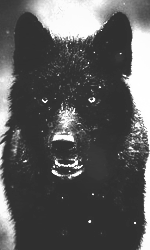--Alien--'s Achievements
-
Filex Dragneel started following --Alien--
-
--Alien-- started following Filex Dragneel
-
¤ Your name: Anomaly ¤ Claimed Admin name: The Queen ¤ Date and time: 15min ¤ Reason of complaint: Banned Without Reason if you have screenShot you post it here ¤ Proof (screenshot or console or demo): https://ibb.co/5MNpy1Y
-
ATHENS (Reuters) - Greece’s tourism sector is expected to recover next summer following a dramatic fall in revenues due to the coronavirus pandemic this year, a senior industry official said on Tuesday. Tourism is the main driver of Greece’s economy, accounting for about 20% of its output and employing one in five workers. How the sector fares is crucial for the country which emerged from its third international bailout in 2018 after a decade-long debt crisis. Yannis Retsos, head of the country’s tourism confederation (SETE), said tourism revenues this year had reached 4 billion euros, down from 18 billion in 2019, due to global travel restrictions to contain the spread of the coronavirus. Greece expects its economy to shrink by about 10 percent this year and is pinning its hopes in the second half of 2021 for an economic recovery. “We need to wait for the second half of the year to see some sort of action in tourism,” Retsos told a Greek radio station. “Anything we see from May on would be a very positive surprise,” he said. Based on the latest official data from the Bank of Greece, tourism arrivals fell 76% in the January-to-October period. Greece has reported 135,931 infections since it documented its first case in February and 4,672 deaths. The country has been in a nationwide lockdown since early November and allowed only hair salons and bookstores to reopen for the Christmas season.
-
- 1
-

-
There are no mechanical changes to report here, but there are visual, trim and specification alterations with the introduction of this N-Guard Double Cab variant (whose name I can’t say without a French flourish, as if I’m about to referee a fencing match. And now neither can you. Sorry.) Outside, there are four new colours to pick from, some new decals and, in the loadbay, a new spray-on bed liner, slightly soft to absorb knocks and noises, as befits one of the more civilised pick-ups on the market. When this generation of Navara entered production in 2014, it did so with five-link suspension and coil springs at the rear, rather than the leaf springs of all of its major rivals, and so set the target as being the most car-like to drive – so much so that Mercedes-Benz based the X-Class on it, although it stopped when nobody bought it. It still has a solid rear axle, though, a commercial-vehicle-tax-friendly 1100kg payload and a 3500kg towing limit. Its overall cost is £37,250 (on the road, including VAT), which is competitive at this end of the market. Inside, there’s blue contrast stitching and new footwell lighting that shines on new floor mats. It’s all subtle stuff, but then it doesn’t need too much embellishment, given that the dashboard looks like it has been lifted from any Nissan car. There have also been upgrades to the infotainment system: an 8.0in touchscreen that is not too complex to navigate and does phone mirroring. It’s the high passenger floor and rake-only steering adjustment that give away that this is no regular SUV. To drive, the Navara remains as it was, with a distant rumble from its 187bhp 2.3-litre diesel engine. It drives here through a seven-speed automatic gearbox, which is preferable to the long-throw six-speed manual. There’s the odd steering wheel shimmy over bumps and the unladen ride is a little excitable, but remember that this is a double-cab pick-up, and for one of those it’s refined, habitable and a respectable motorway cruiser.
-
- 1
-

-
Trippier was fined £70,000 and will miss at least 14 games for Atletico Madrid following his ban handed out by the Football Association; Simeone criticises FA: "While the FA benefits from this, Atletico is harmed by it and has nothing to do with it" Kieran Trippier's 10-week worldwide ban from football for breaching betting rules must be reassessed, according to Atletico Madrid manager Diego Simeone, who says the punishment unfairly harms the La Liga club. Tripper was fined £70,000 by the Football Association and suspended for 10 weeks from all football and football activity for four breaches of a rule which prevents players from providing information to others on their position which is not available in public at the time. The England international right-back will miss at least 14 matches for Atletico, who are top of La Liga and challenging for their first Spanish title since 2014 and have reached the last 16 of the Champions League, where they will face Chelsea. Simeone says Atletico have "nothing to do with" the situation regarding Trippier's betting charge "We think it's unfair and we hope it can be revised because of the damage done to Atletico," Simeone said ahead of Atletico's league clash with Getafe on Wednesday, the first game Trippier will miss. "Atletico obviously have absolutely nothing to do with this situation so we hope it can be re-assessed in some way, because while the FA benefits from this, Atletico is harmed by it and has nothing to do with it. "But the circumstances are what they are and we'll have to live with it." Trippier, who is in his second season with Atletico, has played every minute of their 19 games in La Liga and the Champions League. Following Trippier's punishment, Atletico look set to launch a bold January bid for Arsenal's Ainsley Maitland-Niles, whose progress they have been monitoring for the past 12 months. Croatian full-back Sime Vrsaljko is set to take Trippier's place in the team, having only played 14 minutes of first-team football this season as a substitute in a recent Copa del Rey victory over minnows Cardassar. Diego Costa terminates Atletico Madrid contract Atletico Madrid have reached a mutual agreement with Diego Costa to terminate the Spain international striker's stay at the club. The former Chelsea forward's deal with the La Liga giants was set to expire in June 2021 but he has asked the club to end his stay prematurely due to personal reasons. Diego Costa can leave Atletico on a free transfer next month It means the 32-year-old will now be able to join a new club on a free transfer in the January transfer window. "Atlético de Madrid and Diego Costa have reached an agreement for the termination of the striker's contract, which was to end on June 30, 2021," an Atletico statement read on Tuesday. "The striker asked to leave the club for personal reasons a few days ago and on Tuesday signed the termination of his contract. "The club thanks Diego Costa for his dedication during these years and wishes him well in the next stage of his professional career."
-
- 1
-

-
The earthquake caused extensive damage in Petrinja and Zagreb A magnitude 6.4 earthquake has struck central Croatia, with reports of many injuries and at least one death. A 12-year-old girl was killed in Petrinja, the prime minister said as he visited the town. Further deaths have been reported by local media in a village to the south-west of Petrinja, but are yet to be confirmed. The mayor of Petrinja said around half the town had been destroyed and people were being pulled from the rubble. The earthquake could be felt in the Croatian capital Zagreb, in neighbouring Bosnia and Serbia, and as far away as Italy. One woman was pulled alive from the rubble of the town hall, Croatian media reported. "We are pulling people from the cars, we don't know if we have dead or injured," Darinko Dumbovic, the mayor of Petrinja, told regional broadcaster N1. "There is general panic, people are looking for their loved ones." The mayor was speaking to reporters on Tuesday when Petrinja, home to 20,000 people, was hit by another, weaker, tremor. Croatia's president and prime minister saw for themselves the scale of damage in Petrinja within two hours of the earthquake and were united in their response. President Zoran Milanovic compared the scene to Grozny, the capital of the the Russian republic of Chechnya, which was largely destroyed during a siege 20 years ago. The prime minister said it was "clear as day" that Petrinja was no longer safe for human habitation. Petrinja is home to some 20,000 residents and the prime minister said it was now unsafe to live in It is a bitter blow for the town's people, who faced a significant rebuilding operation after Croatia's war of independence in the 1990s. More recently, they have been tackling economic devastation, with the decline of traditional industries. Croatia's leaders have promised funds for reconstruction. But Petrinja's residents will be seeing in the new year in temporary accommodation - with little prospect of an early return home. A kindergarten also collapsed in Petrinja, but it was empty at the time of the quake. In a village just outside Petrinja, a worker told N1 that nine of its 10 houses were destroyed. Slovenia has moved to close the Krsko nuclear power plant it co-owns with Croatia. The US Geological Survey said it was the largest earthquake to occur in Croatia since the introduction of modern seismic instrumentation. An earthquake of similar size occurred in 1880 near Zagreb. A magnitude 5.2 earthquake hit central Croatia on Monday and there are fears of more. Branko Dragicevic of the Serbian seismological institute told the BBC: "We can expect further quakes."
-
- 1
-

-
Alfa Romeo: 33 Stradale (18 built, 1967-1969) Exclusivity sells cars but sometimes it’s not intentional. Even mass-market companies like Honda, Toyota and Volkswagen have released cars that remained low-volume models. Some were largely overlooked by their target audience for a multitude of reasons, like BMW's exquisite 507 (pictured). Others were quickly canceled for cost reasons, like Volkswagen’s Australia-bound Beetle-based buggy. Join us for a look at some of the rarest cars made by mainstream brands. For consistency, we’re only including street-legal production models built by the factory. We’re leaving out cars launched as limited-edition models (the Bugatti Centodieci, for example), coachbuilt models, race cars not designed for street use, prototypes and concepts. Let's take a look:
-
- 1
-

-
Liverpool players dominate the side, with Virgil van Dijk and Mohamed Salah included; Kevin De Bruyne, Harry Kane and Bruno Fernandes are among the other Premier League stars to make the team Jamie Carragher and Gary Neville picked their best Premier League XI of 2020 on Monday Night Football. But who made it in? The Sky Sports pundits looked back on the past 12 months in their final show of the year and selected the top-flight's best performers over that period. Unsurprisingly, Liverpool - who sealed their first-ever Premier League crown in the summer - dominated the line-up, with Alisson, Trent Alexander-Arnold, Virgil van Dijk, Andy Robertson, Jordan Henderson, and Mohamed Salah all included. There were also spots for Tottenham pair Harry Kane and Heung-Min Son, with Manchester City playmaker Kevin De Bruyne and Manchester United star Bruno Fernandes in midfield. Wolves' Conor Coady completed the backline. Goalkeeper: Alisson is an amazing player Neville said: "Alisson has been the best by a mile. Ederson had been outstanding for a few seasons but his standards have dropped. When you have an outstanding goalkeeper, the difference it makes is off the scale. The upgrade from a good goalkeeper to a great goalkeeper, points-wise, is unquantifiable. "He (Alisson) just makes save after save and makes the fewest errors, which is the key. He gives complete assurance to everyone in his team. If you want to win titles, then you need an amazing goalkeeper - and he's an amazing goalkeeper." Liverpool goalkeeper Alisson is the best in the league, according to Nev and Carra Carragher said: "When Alisson was missing at Aston Villa, Liverpool lost 7-2. Liverpool were as bad against Fulham but the difference was that he was in goal. It's equally important as when Virgil van Dijk came in when Liverpool signed Alisson. Liverpool, without Van Dijk, are still the best team in the league and it's because he's there." Defence: Back four picks itself Neville said: "The second centre-back was a debatable one. We had Eric Dier, Harry Maguire, Ayermic Laporte, Tyrone Mings and Conor Coady - but Coady's stats but were better than the rest. He's part of a great Wolves defence and has broken into the England team. "Robertson is an unbelievable player. To do what he's done for the past three years up and down the line at the intensity he plays at. He's quality and so consistent. Trent Alexander-Arnold mesmerises me with the things he does - I never thought a full-back could do those things. But if he wants to look anywhere at who to become in the next five years, it's the left-back that he's playing with. He needs to get defensively as good as him, as consistent as him, and to be intense as him in every game." Carragher said: "I went with Coady, not only for his Wolves performances but for his England breakthrough too. There's always a question mark surrounding players who don't play at the top level, whether it would be Champions League or international football. But Coady stepped up for England, impressing everyone with his personality. We can talk about his clean sheets and how many games he plays but his passing out from the back is as good as anyone - possibly only Van Dijk is better than him." Midfield: All three players standout Carragher said: "All of them stand out. Jordan Henderson was footballer of the year last year, Kevin De Bruyne pipped him to PFA Player of the Year and if Bruno Fernandes had been signed in the summer rather than January, I think he'd be in the running for player of the year as well. The three of them would have been fighting it out. Jordan Henderson led Liverpool to the Premier League title "For me, De Bruyne is the best player in the league. I think he's going to be a Premier League great when we look back at his time at Manchester City. The best way to describe Henderson, when you see the Liverpool team and he's not there, the team doesn't feel the same. There's something missing. He just gives that side presence and authority in the middle of the pitch. "And Fernandes, I remember having a debate with Roy Keane, talking about how far Manchester United were away. I said sometimes one player can just spark something. At times for us, it was Fernando Torres and his arrival just lifted everyone. Luis Suarez did the same when he came to Liverpool, so you are never as far away as you think, and Fernandes has done that with United. Only Liverpool have won more points than United since Fernandes' debut and that's what just one player can do." Neville said: "There's Paul Pogba, David de Gea and Harry Maguire at Manchester United. They've all been captains and now there's Edinson Cavani with his experience, but Fernandes is the leader in that team. You watch him and he's the leader by example. "He's a leader in what he does when he gives the ball away, he sprints straight after it. Every time the team is on the ball, he wants the ball and every time he gets the ball, he wants to play a pass that matters. He's transformed the whole club and every time he doesn't play, it's a massive problem. That's a big issue when you are almost reliant on him. "And of all the midfield players they've got, Donny van de Beek, Pogba, Fred, Nemanja Matic and Scott McTominay, he is just absolutely out there. "Those three midfield players pick themselves and Fernandes has been an absolute sensation at Manchester United. He is the leader of that team and although he's not wearing the captain's armband, he could be." Attack: Son just pips Mane Neville said: "You cannot criticise Son or Mane. There is no negative about them. They are both absolutely world-class. Every club in the world would want Son or Mane playing for them - Barcelona, Real Madrid, Bayern Munich, Paris Saint-Germain and Manchester United, every club in the world want those two players. Harry Kane leads the line for the team of the season "Just plug the actual goals and assists in, and Son's just done better in a team that isn't as good obviously. Son just won it but that is no reflection on Mane. He could've easily been in the team. "The reason I've always chosen Salah over Mane is because he's cold-blooded. Mane's a team player, who would always put the team first, but Salah is cold-blooded and that's not a negative. It makes Liverpool vicious as a team and he's the type who will just go for it again and again and again and again, and he won't stop." Carragher said: "I love Mane but he's just going through a little spell at the moment. He's got just one goal in nine games whereas Son's been off the charts. You couldn't not pick Son. "But what I would say is, that position, the left-sided attacker is the strongest position in the league and where the best players are. For the last two or three years, you've had Mane and Raheem Sterling who have been as good as anything in the world in that position. "Eden Hazard just dropped off at Real Madrid and Neymar is obviously a top player, but I think Marcus Rashford and Son have jumped up now as well. Rashford's a super player and Son this season has just edged the others, but they are four probably world-class players. Maybe Rashford is just slightly under trying to get into that next bracket but I do think we've got the best in the world in that position in the Premier League."
-
- 1
-

-
A Chinese scientist at the centre of unsubstantiated claims that the coronavirus leaked from her laboratory in the Chinese city of Wuhan has told the BBC she is open to "any kind of visit" to rule it out. The surprise statement from Prof Shi Zhengli comes as a World Health Organization (WHO) team prepares to travel to Wuhan next month to begin its investigation into the origins of Covid-19. The remote district of Tongguan, in China's south-western province of Yunnan, is hard to reach at the best of times. But when a BBC team tried to visit recently, it was impossible. Plain-clothes police officers and other officials in unmarked cars followed us for miles along the narrow, bumpy roads, stopping when we did, backtracking with us when we were forced to turn around. We found obstacles in our way, including a "broken-down" lorry, which locals confirmed had been placed across the road a few minutes before we arrived. And we ran into checkpoints at which unidentified men told us their job was to keep us out. At first sight, all of this might seem like a disproportionate effort given our intended destination, a nondescript, abandoned copper mine in which, back in 2012, six workers succumbed to a mystery illness that eventually claimed the lives of three of them. But their tragedy, which would otherwise almost certainly have been largely forgotten, has been given new meaning by the Covid-19 pandemic. Those three deaths are now at the centre of a major scientific controversy about the origins of the virus and the question of whether it came from nature, or from a laboratory. And the attempts of Chinese authorities to stop us reaching the site are a sign of how hard they're working to control the narrative. For more than a decade, the rolling, jungle-covered hills in Yunnan - and the cave systems within - have been the focus of a giant scientific field study. Chinese virologist Shi Zhengli is seen here inside the laboratory in Wuhan It has been led by Prof Shi Zhengli from the Wuhan Institute of Virology (WIV). Prof Shi won international acclaim for her discovery that the illness known as Sars, which killed more than 700 people in 2003, was caused by a virus that probably came from a species of bat in a Yunnan cave. Ever since, Prof Shi - often referred to as "China's Batwoman" - has been in the vanguard of a project to try to predict and prevent further such outbreaks. By trapping bats, taking faecal samples from them, and then carrying those samples back to the lab in Wuhan, 1,600km (1,000 miles) away, the team behind the project has identified hundreds of new bat coronaviruses. But the fact that Wuhan is now home to the world's leading coronavirus research facility, as well as the first city to be ravaged by a pandemic outbreak of a deadly new one, has fuelled suspicion that the two things are connected. The Chinese government, the WIV, and Prof Shi have all angrily dismissed the allegation of a virus leak from the Wuhan lab. But with scientists appointed by the WHO scheduled to visit Wuhan in January for an inquiry into the origin of the pandemic, Prof Shi - who has given few interviews since the pandemic began - answered a number of BBC questions by email. "I have communicated with the WHO experts twice," she wrote, when asked if an investigation might help rule out a lab leak and end the speculation. "I have personally and clearly expressed that I would welcome them to visit the WIV," she said. To a follow-up question about whether that would include a formal investigation with access to the WIV's experimental data and laboratory records, Prof Shi said: "I would personally welcome any form of visit based on an open, transparent, trusting, reliable and reasonable dialogue. But the specific plan is not decided by me." The BBC subsequently received a call from the WIV's press office, saying that Prof Shi was speaking in a personal capacity and her answers had not been approved by the WIV. The BBC denied a request to send the press office a copy of this article in advance. Dr Peter Daszak: "I've yet to see any evidence at all of a lab leak or a lab involvement in this outbreak Many scientists believe that by far the most likely scenario is that Sars-Cov-2, the virus that causes Covid-19, jumped naturally from bats to humans, possibly via an intermediary species. And despite Prof Shi's offer, for now there appears to be little chance of the WHO inquiry looking into the lab-leak theory. The terms of reference for the WHO inquiry make no mention of the theory, and some members of the 10-person team have all but ruled it out. Peter Daszak, a British zoologist, has been chosen as part of the team because of his leading role in a multimillion dollar, international project to sample wild viruses. It has involved close collaboration with Prof Shi Zhengli in her mass sampling of bats in China, and Dr Daszak previously called the lab-leak theory a "conspiracy theory" and "pure baloney". "I've yet to see any evidence at all of a lab leak or a lab involvement in this outbreak," he said. "I have seen substantial evidence that these are naturally occurring phenomena driven by human encroachment into wildlife habitat, which is clearly on display across south-east Asia." Asked about seeking access to the Wuhan lab to rule the lab-leak theory out, he said: "That's not my job to do that. "The WHO negotiated the terms of reference, and they say we're going to follow the evidence, and that's what we've got to do," he added. The Huanan Seafood Wholesale Market in Wuhan was linked to early cases of the new coronavirus One focus of the inquiry will be a market in Wuhan which was known to be trading in wildlife and was linked to a number of early cases, though the Chinese authorities appear to have already discounted it as a source of the virus. Dr Daszak said the WHO team would "look at those clusters of cases, look at the contacts, look at where the animals in the market have come from and see where that takes us". The deaths of the three Tongguan workers following exposure to a mineshaft full of bats raised suspicions that they'd succumbed to a bat coronavirus. It was exactly the kind of animal-to-human "spillover" that was driving the WIV to sample and test bats in Yunnan. It is no surprise then that, following those deaths, the WIV scientists began sampling bats in the Tongguan mineshaft in earnest, making multiple visits over the next three years and detecting 293 coronaviruses. But apart from one brief paper, very little was published about the viruses they collected on those trips. In January this year, Prof Shi Zhengli became one of the first people in the world to sequence Sars-Cov-2, which was already spreading rapidly through the streets and homes of her city. She then compared the long string of letters representing the virus's unique genetic code with the extensive library of other viruses collected and stored over the years. And she discovered that her database contained the closest known relative of Sars-Cov-2. RaTG13 is a virus whose name has been derived from the bat it was extracted from (Rhinolophus affinis, Ra), the place it was found (Tongguan, TG), and the year it was identified, 2013. Seven years after it was found in that mineshaft, RaTG13 was about to become one of the most hotly contested scientific subjects of our time. China imposed tough restrictions on Wuhan to stop the spread of the virus There have been many well-documented cases of viruses leaking from labs. The first Sars virus, for example, leaked twice from the National Institute of Virology in Beijing in 2004, long after the outbreak had been brought under control. The practice of genetically mani[CENSORED]ting viruses is also not new, allowing scientists to make them more infectious or more deadly, so they can assess the threat and, perhaps, develop treatments or vaccines. And from the moment it was isolated and sequenced, scientists have been struck by the remarkable ability of Sars-Cov-2 to infect humans. The possibility that it acquired that ability as a result of mani[CENSORED]tion in a laboratory was taken seriously enough for an influential group of international scientists to address it head on. In what has become the definitive paper ruling out the possibility of a lab leak, RaTG13 has a starring role. Published in March in the magazine Nature Medicine, it suggests that if there had been a leak, Prof Shi Zhengli would have found a much closer match in her database than RaTG13. While RaTG13 is the closest known relative - at 96.2% similarity - it is still too distant to have been mani[CENSORED]ted and changed into Sars-Cov-2. Sars-Cov-2, the authors concluded, was likely to have gained its unique efficiency through a long, undetected period of circulation in humans or animals of a natural and milder precursor virus that eventually evolved into the potent, deadly form first detected in Wuhan in 2019. Medics and scientists in Wuhan battled to control the early stages of the pandemic Where though, some scientists are beginning to wonder, are those reservoirs of earlier natural infection? Dr Daniel Lucey is a physician and infectious disease professor at the Georgetown Medical Centre in Washington DC and a veteran of many pandemics - Sars in China, Ebola in Africa, Zika in Brazil. He is certain that China has already conducted thorough searches for evidence of precursor viruses in stored human samples in hospitals and in animal po[CENSORED]tions. "They have the capability, they have the resources and they have the motivation, so of course they've done the studies in animals and in humans," he said. Finding the origin of an outbreak was vital, he said, not just for wider scientific understanding, but also to stop it emerging again. "We should search until we find it. I think it's findable and I think it's quite possible it's already been found," he said. "But then the question arises, why hasn't it been disclosed?" Dr Lucey still believes that Sars-Cov-2 is most likely to have a natural origin, but he does not want the alternatives to be so readily ruled out. "So here we are, 12, 13 months out since the first recognised case of Covid-19 and we haven't found the animal source," he said. "So, to me, it's all the more reason to investigate alternative explanations." Might a Chinese laboratory have had a virus they were working on that was genetically closer to Sars-Cov-2, and would they tell us now if they did? "Not everything that's done is published," Dr Lucey said. It's a point I put to Peter Daszak, the member of the WHO origins study team. "You know, I've worked with the WIV for a good decade or more," he said. "I know some of the people there pretty well and I have visited the labs frequently, I've met and had dinner with them over 15 years. "I'm working in China with eyes wide open, and I'm racking my brain back in time for the slightest hint of something untoward. And I've never seen that." Asked if those friendships and funding relationships with the WIV presented a conflict of interest with his role on the inquiry, he said: "We file our papers; it's all there for everyone to see." And his collaboration with the WIV, he said, "makes me one of the people on the planet who knows the most about the origins of these bat coronaviruses in China". China may have provided only limited data about its hunt for the origin of Sars-Cov-2, but it has begun to promote a theory of its own. Based on a few inconclusive studies conducted by scientists in Europe that suggest Covid-19 may have been circulating earlier than previously thought, state propaganda is full of stories suggesting the virus didn't start in China at all. In the absence of proper data, speculation is only likely to grow, much of it focused on RaTG13 and its origins in a Tongguan mineshaft. Old academic papers have been dug up online that appear to differ from the WIV's statements about the sick mine workers - among them a thesis by a student at the Kunming Hospital University. "I've just downloaded the Kunming Hospital University student's masters thesis and read it," Prof Shi told the BBC. "The narrative doesn't make sense," she said. "The conclusion is neither based on evidence nor logic. But it's used by conspiracy theorists to doubt me. If you were me, what you would do?" Prof Shi has also faced questions about why the WIV's online public database of viruses was suddenly taken offline. She told the BBC that the WIV's website and the staff's work emails and personal emails had been attacked, and the database taken offline for security reasons. "All our research results are published in English journals in the form of papers," she said. "Virus sequences are saved in the [US-run] GenBank database too. It's completely transparent. We have nothing to hide." There are important questions to be asked in the Yunnan countryside, not just by scientists, but by journalists too. After a decade of sampling and experimenting on viruses collected from bats, we now know that back in 2013 the closest known ancestor was discovered of a future threat that would claim well over a million lives and devastate the global economy. Yet the WIV, according to the published information, did nothing with it, except sequence it and enter it into a database. Ought that to call into question the very premise on which the expensive, and some would say risky, mass sampling of wild viruses is based? "To say that we didn't do enough is absolutely correct," Peter Daszak told the BBC. "To say that we failed is not fair at all. What we should have been doing is 10 times the amount of work on these viruses." Both Dr Daszak and Prof Shi are adamant that pandemic prevention research is vital, urgent work. "Our research is forward-looking, and it's difficult for non-professionals to understand," Prof Shi wrote by email. "In the face of countless micro-organisms that exist in nature, we humans are very small." New coronavirus variant: What do we know? Tracking the global pandemic: Where has been hit hardest? The WHO is promising an "open-minded" inquiry into the origins of the novel coronavirus, but the Chinese government is not keen on questions, at least not from journalists. After leaving Tongguan, the BBC team tried to drive a few hours north to the cave where Prof Shi carried out her ground-breaking research on Sars almost a decade ago. Still being followed by several unmarked cars, we hit another roadblock, and were told there was no way through. A few hours later, we discovered that local traffic had been diverted onto a dirt track that skirted the obstruction, but as we attempted to use the same route, we met yet another "broken down" car in our path. We were trapped in a field for over an hour, before finally being forced to head for the airport.
-
- 1
-

-
Your Nickname: Vevo Your Problem: When i open computer after 5min Closed and get blue Background Screenshot: https://ibb.co/dbqh6fY https://ibb.co/S3c3ctc






















